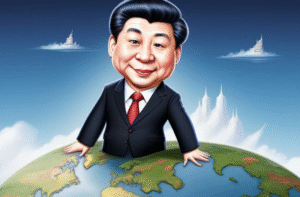$SPY $XPO $CMA
#tariffs #trump #globaltrade #shippingindustry #supplychain #freight #economy #markets #logistics #protectionism #us #trade
The US, while a major player in the world economy, is not a dominant force that can single-handedly upheave global trade through protectionist measures like tariffs. Tariffs introduced by former President Donald Trump, particularly during his tenure, were aimed at pressuring trade partners and protecting American industries. However, their ripple effect on global trade shouldn’t be overstated when discussing sectors like shipping. The US accounts for about 10% of global trade flows, a significant chunk but not enough to single-handedly sink entire industries such as shipping, where global players like China and the European Union have just as large, if not larger, roles in the movement of goods. For shipping industry giants and freight companies, the impact of US tariffs is cushioned by the global scale and the diversity of their routes and clientele.
One key misconception about tariffs is that they halt global trade altogether. Although tariffs can temporarily skew supply chains, disrupt the smooth flow of goods, and even redirect routes, the sheer scale and interconnectedness of global trade mean that other channels usually fill these gaps. A major part of the reason lies in the strong demand for goods from a wide array of nations. Global leading shipping companies like Maersk, XPO Logistics, and CMA CGM operate in dozens of countries and manage supply chain logistics well beyond US borders. Exporters quickly adapt by finding ways around tariffs, often by obtaining goods or materials from tariff-free countries, creating recomposed supply chains. The shipping industry at large operates on these flexible logistics networks, reducing the likelihood of tariffs being a catastrophic blow.
Financial markets in the shipping and logistics sector, reflected through publicly traded companies’ stock performance like $XPO or $CMA, have shown remarkable resilience, even as trade tensions from tariffs built up. Investors have already factored the effects of such protectionist measures into stock prices, particularly among companies with geographically diversified revenue streams. In the broader equity markets, indexes like $SPY that include major logistics and shipping players also saw temporary dips but quickly rebounded, as declining trade between two major countries like the US and China was counterbalanced by strengthening trade ties with regions like Latin America or Africa. Market analysts typically adjust their earnings estimates moderately under such trade scenarios but rarely project long-term devastation for globally integrated industries like shipping.
The broader picture comes into sharp focus when considering the geopolitical underpinnings of tariff implementations. Tariffs are notoriously ineffective at preventing the flow of goods entirely. Although the US has consistently attempted to use tariffs as a foreign policy tool to reduce its trade deficit, often with China at the center of these measures, the global shipping network has proven adaptable. For both investors and companies, tariffs are more of an eventual speed bump rather than a long-term roadblock. The shipping industry remains agile, shifting as needed, making the fear of collapsing due to tariffs largely exaggerated in terms of market impact. Shipping stocks and shipping-exposed indexes can expect these waves of fluctuation, but they tend to maintain relative stability over time.











Comments are closed.